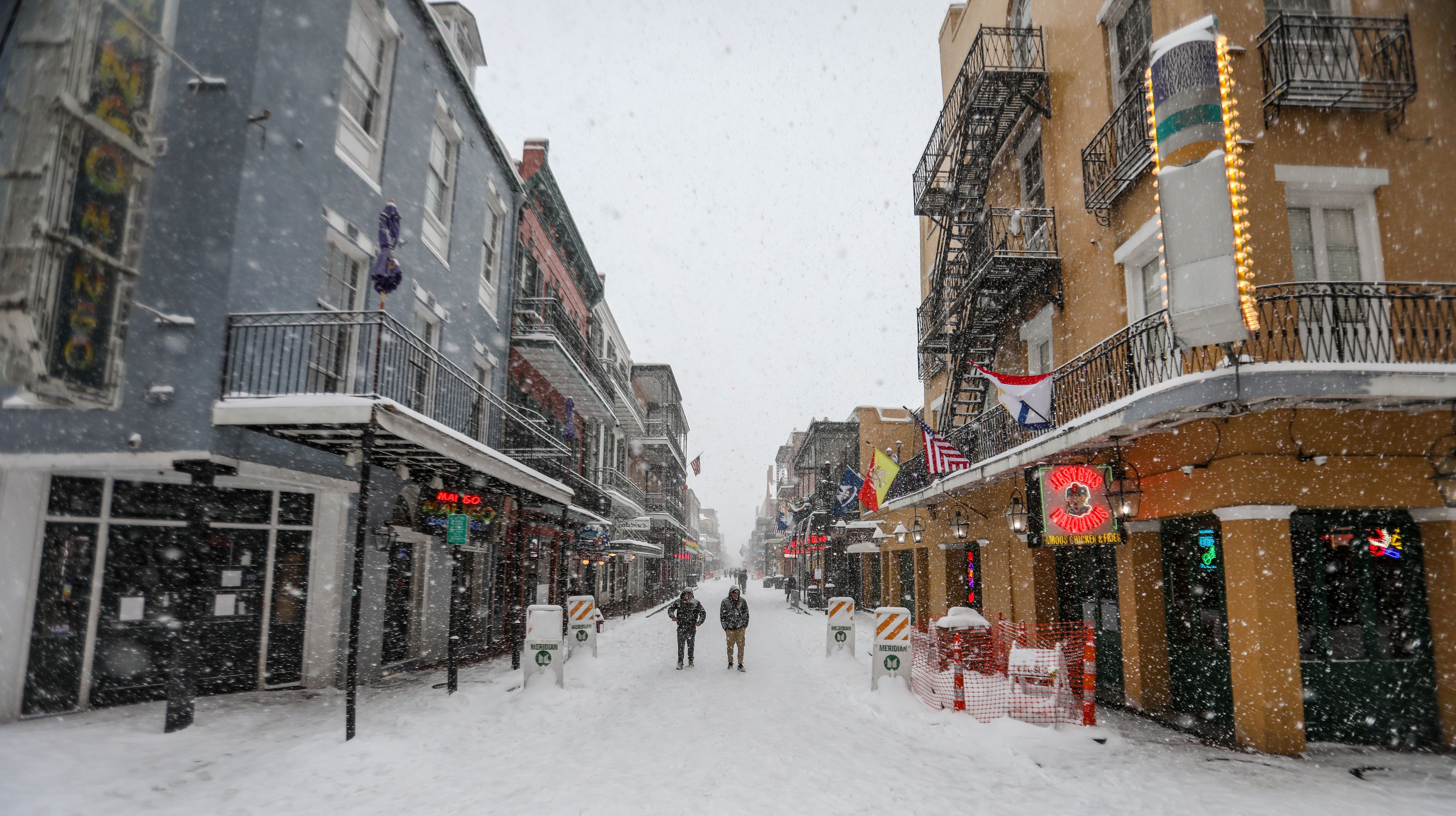When you think of a winter wonderland, the first thing that jumps to mind probably isn’t a blanket of freshly fallen snow in New Orleans and Houston. Yet, for huge swaths of the southern United States, last week brought a cold, icy mess. Some 40 million people from Texas to Florida were under a cold weather warning last week —locales usually known for mild winter weather. For some locations along the Texas-Louisiana border, the blast also came with their first-ever blizzard warning. “This is a once-in-a-lifetime event for a lot of these folks down there,” said AccuWeather Senior Meteorologist Tom Kines.
These kinds of icy situations offer easy opposition to the idea that the planet is heating up due to our dependence on burning fossil fuels and blasting planet-warming gases into the atmosphere. But atmospheric science isn’t that easily explained away. Here’s what we know about climate change and its relationship with the extreme cold freezing the south.
Meet the polar vortex and the jet stream
The main culprit behind this unusually icy cold spell is the polar vortex. According to the National Weather Service, the polar vortex is a large swath of low pressure, cold air that normally rests on the planet’s always-chilly poles. The polar jet stream is a band of strong westerly winds located some 5-9 miles above us in the troposphere. It’s what keeps the polar vortex locked close to the poles, almost like a fence.
But, even the best fences wobble. During the Northern Hemisphere’s winter, the polar vortex expands and sends the cold air south with the jet stream, bringing a wintery chill to the northeast and parts of the midwest. Essentially, what we’re dealing with now is an unusually big wobble, one that’s bringing unprecedented cold to some of the warmest states in the country.
What’s that got to do with climate change?
One thing that normally keeps the polar jet stream strong and in place is the temperature difference between the Arctic and the mid-latitudes. But, human-caused climate change is warming the Arctic faster than the rest of the world. An extra-hot Arctic means there isn’t as big of a temperature difference between the pole and the rest of the world, which weakens the polar jet stream. With weakness comes wobbles. In fact, MIT Climate Portal notes that an increasingly bendy barrier between Arctic and mid-latitude air can dip as far south as Mexico and bring icy winds with it.
In many parts of the U.S., total snowfall has decreased since recordkeeping began in the 1930s, and the cold snaps aren’t always as chilling as they were a century ago. That doesn’t mean weird weather events, like Minnesota-like weather in the South, can’t happen. It means that these events are exactly what they seem: weird and unpredictable, which can be deadly, especially in places where wearing a winter coat would typically cause you to break out into a sweat. Global average temperature is supercharging upwards, which can lead to entirely different effects for each of the systems that govern weather on Earth.

